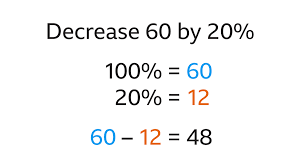MATH
1/77
There's no tags or description
Looks like no tags are added yet.
Name | Mastery | Learn | Test | Matching | Spaced |
|---|
No study sessions yet.
78 Terms
interior angle sum
(n-2) x 180
singular interior angle
((n-2)x180)/n
n (number of sides)
360/ext
exterior angle
360/n
question only provides one angle (int/ ext). how to find other angle?
interior + exterior = 180
- subsitute
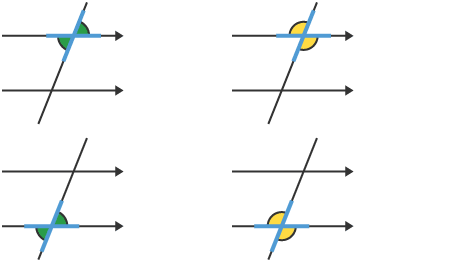
vertically oppsite angles are..
equal
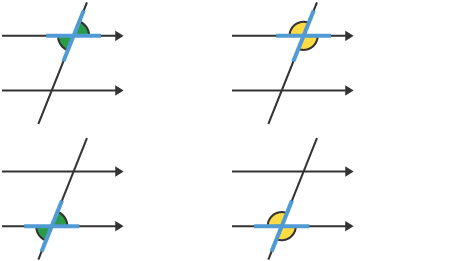
corresponding angles are..
equal
alternate angles are..
equal
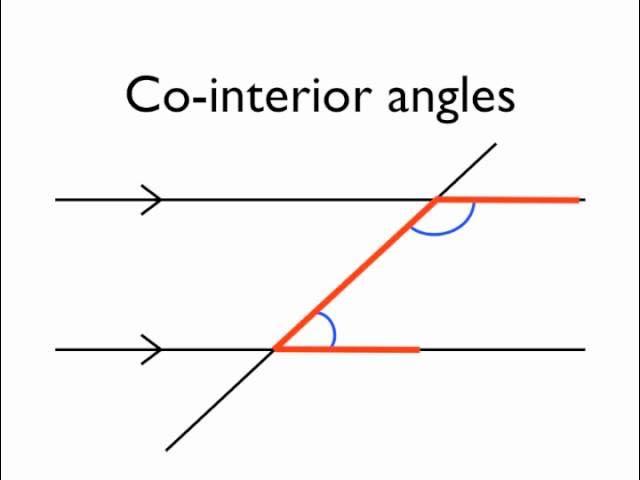
co interior angles equal..
180
lie between two lines and on the same side of a transversal.
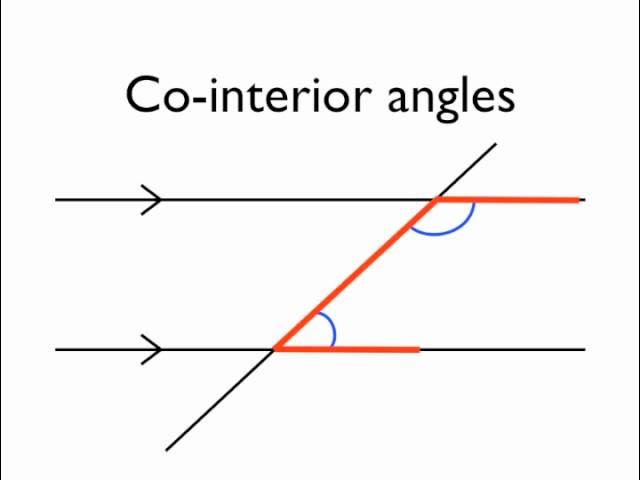
supplementary
add up to 90 degrees
complementary
add up to 180
cos law finding angle
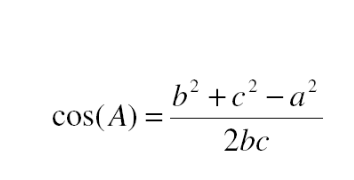
cos law finding side
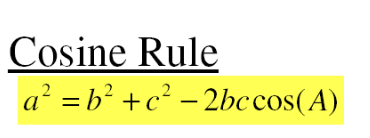
sine rule finding sides
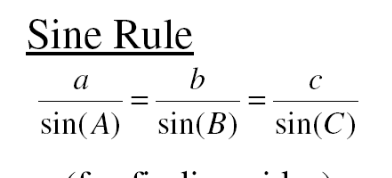
sine rule finding angles
sin A/a = sin B/b = sin C/c
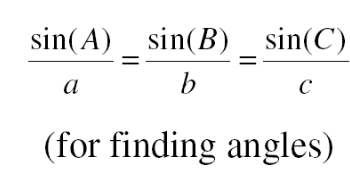
non right angle triangle area formula
½ ab sin c

area of a circle formula
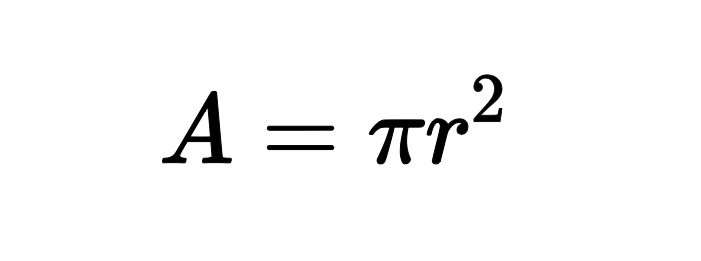
circumference of a circle
2πR
quadratic formula

FOIL
A method for expanding to brackets, where the first, outer, inner, and last terms are multiplied and then summed.
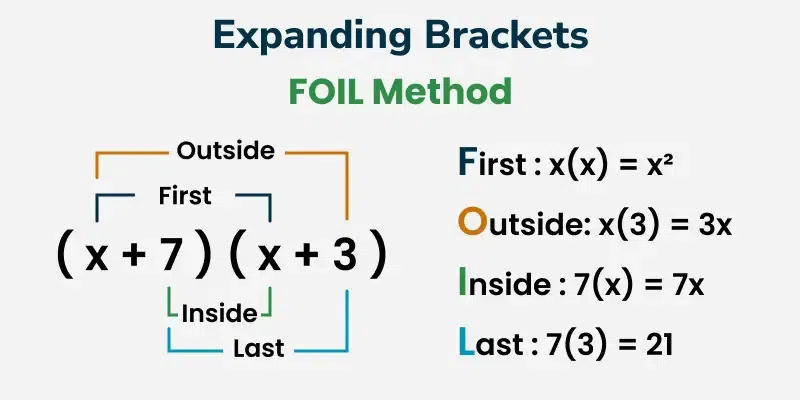
3 things you need to rmb about bearings
3 figures
clockwise direction (measured in)
start measuring from north
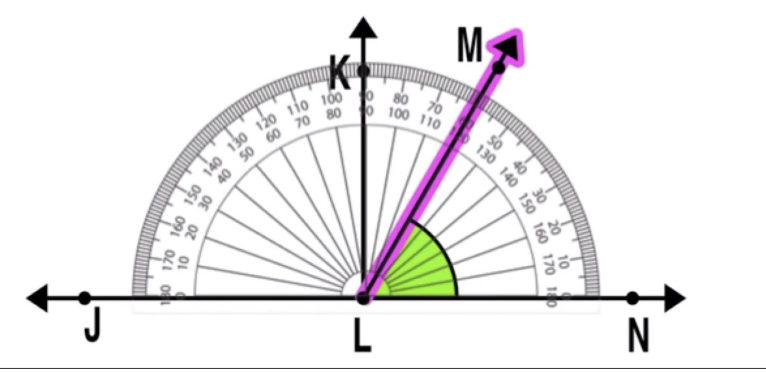
how to use a protractor
Line up the vertex of the angle with the dot at the center of the protractor.
Line up one side of the angle with 0 degrees on the protractor.
Read the protractor to see where the other side of the angle crosses the number scale.
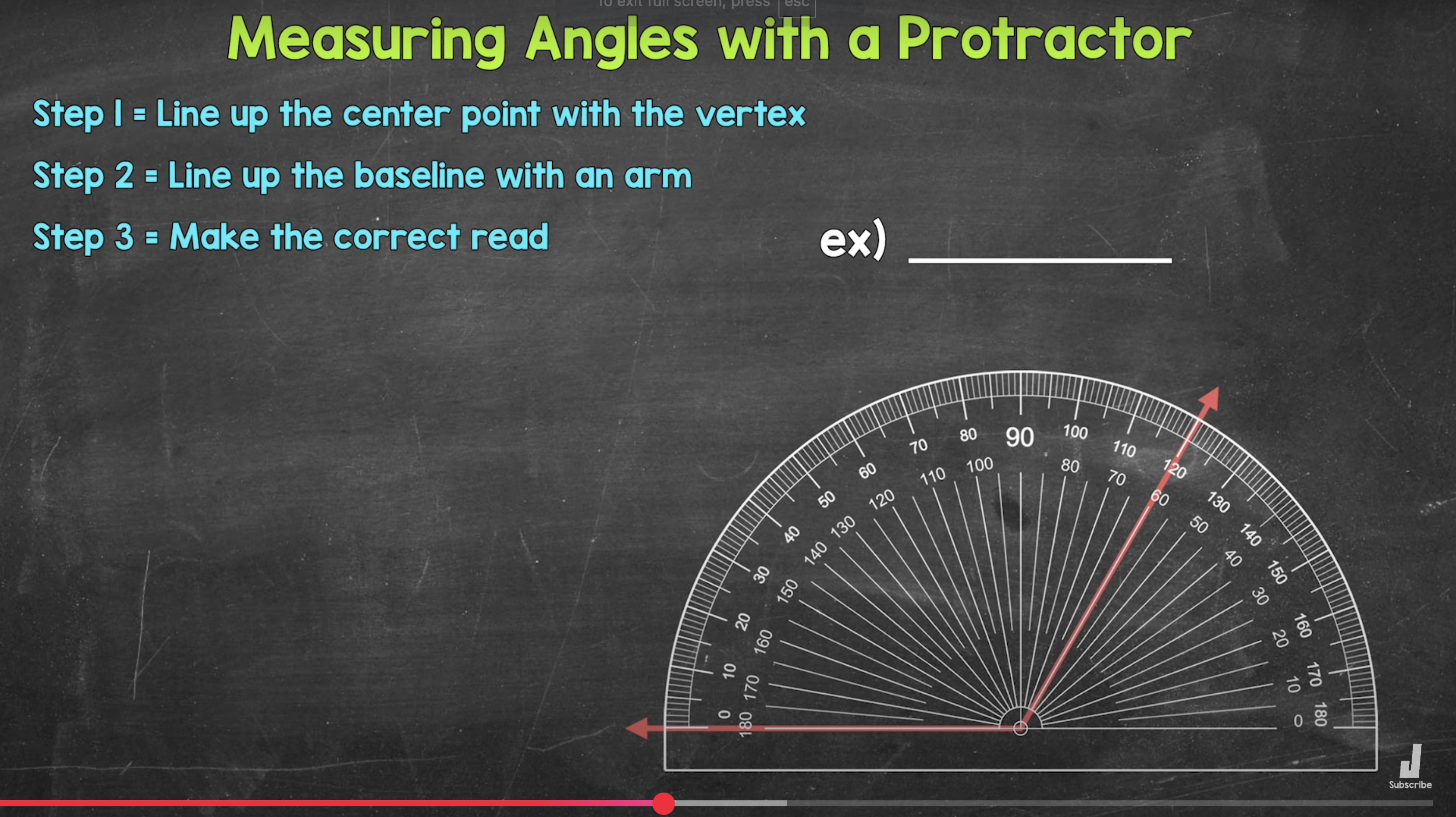
cases when you use sine rule
2 sides known and non included angle (pairing)
2 angles and 1 side known
pairing
cases when you use cosine rule
two sides and included angle
all 3 sides known
how to correctly label a triangle
Label the vertices with capital letters and the sides with lowercase letters corresponding to the opposite vertices.
arc length formula
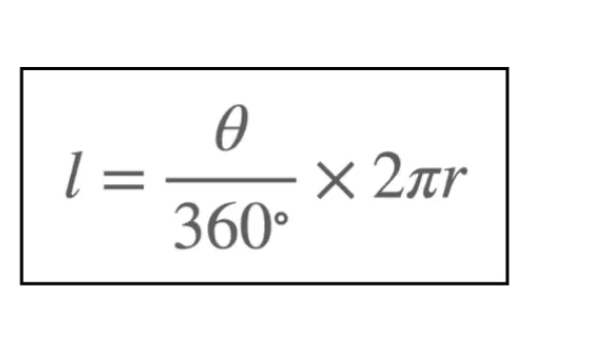
arc area formula

how to factorise a quadratic
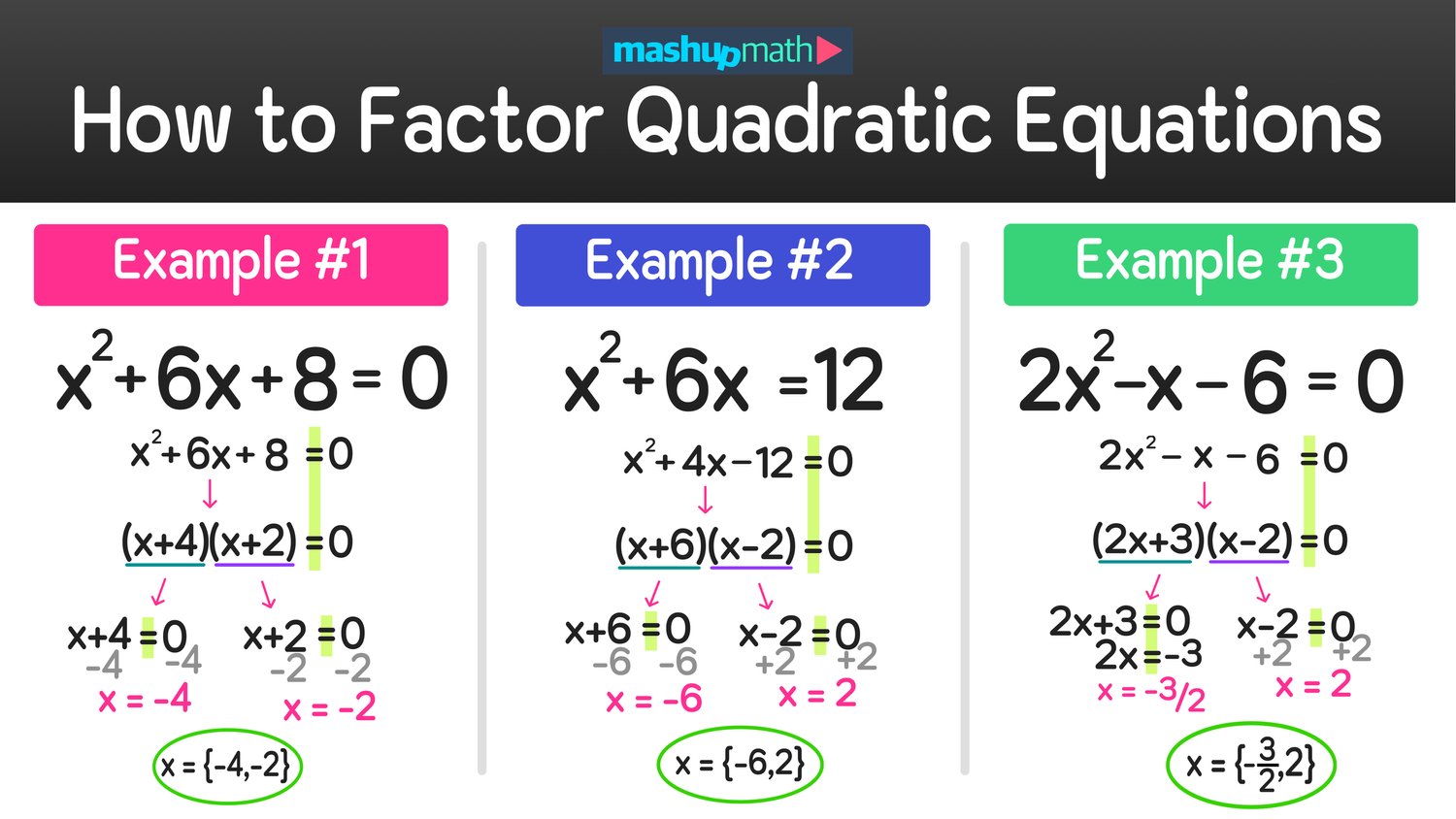
how to recognize diff of squares
when both term are squared numbers and are being subtracted
eg x²-9 -? (x+3) (x-3)
factor
x+6x+8=0
multiply coefficent of x and 8 = 8
find 2 numbers that multiply to 8 but also add up to 6
rewrite the middle term (6x) with said numbers
factorize in groupings
final answer: _(__) ± _(__)
semi circle area
½ π r²
semi circle perimter
½ π x diameter+diameter
area of a circle
πr²
circle circumference
2πr
trapezium area
½ (A+B)xh
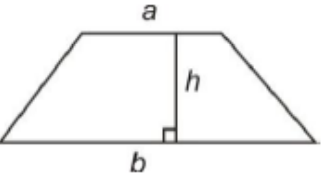
perimeeter parallellogram
2(a+b)
area parralelogram
base x height
b x a x sindelta
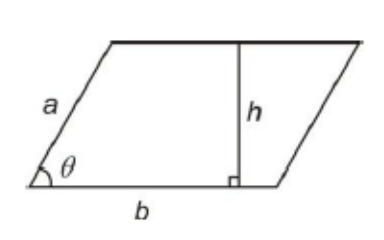
Cylinder SA curved
curved surface area = 2πrh
cylinder total SA
total surface area = 2πr(h + r)
cone surface area curved
curved surface area = πrl
where l = √(r² + h²)
cone TSA
total surface area = πr(l + r)
sphere SA
Surface area = 4πr² |
pyramid SA
Base area + area of the shapes in the sides |
rectangular prism/cuboid SA
Surface area = 2(lb + bh + lh) |
cube SA
Surface area = 6l² |
hemisphere curved SA
Curved surface area = 2π r² |
hemisphere volume
Volume = (2/3)πr³ |
cube volume
Volume = l³ |
cuboid volume
Volume = l × w × h |
pyramid volume
Volume = (1/3) × base area × perpendicular height |
sphere volume
Volume = (4/3)πr³ |
Volume, V, of prism, cross-sectional area A, length 1.
AxL
cone volume
v= 1/3pi r² x h
pythagoras
a²+b²=c²
c is hypothenuse
cube roots from 1-10

square roots from
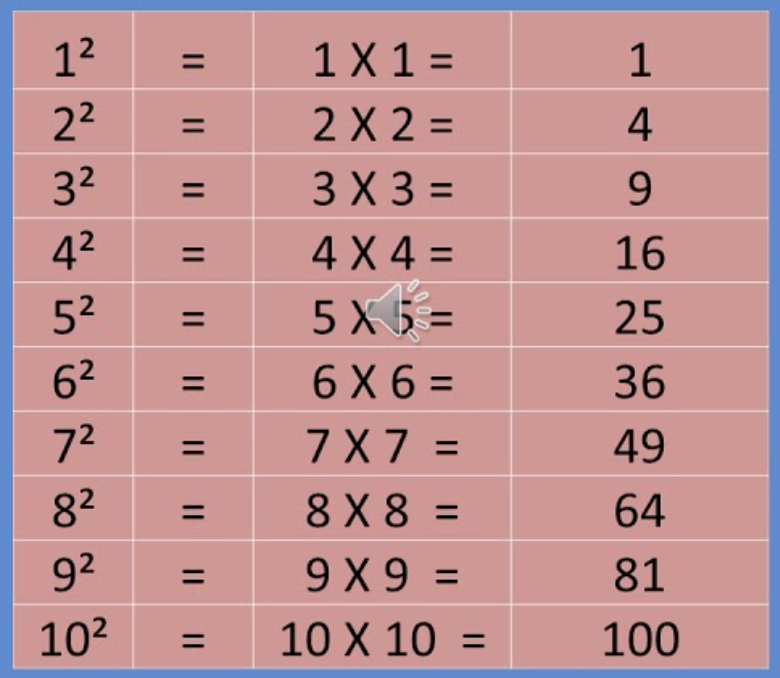
how to round in significant figures eg, 2 sig. figures
identifiy first 2 significant figure digits (non 0 digits)
look at number next to said digit
if said number is 5 or above, change the digit before it to one up
if number is 4 or below, keep the digit
if the original number is a decimal, the rest of the digits arent needed
if the original number is a whole number, replace the digits with zeros
inches to cm
multiply the length value by 2.54 |
cm to inches
divide the length value by 2.54 |
km to m
multiply the length value by 1000 |
m to km
/1000
liter to ml
x1000
ml to l
/1000
during conversions, when the unit gets bigger eg (m to km), you __
divide
during conversion when the unit eg (km to m) gets smaller, you___
multiply
if you are converting to a small unit, you need lots of them so you __
multiply
if converting to a larger unit, you need less of them so you __
divide
cm to mm
x10
mm to cm
/10
g to kg
divide the mass value by 1000 |
kg to g
x1000
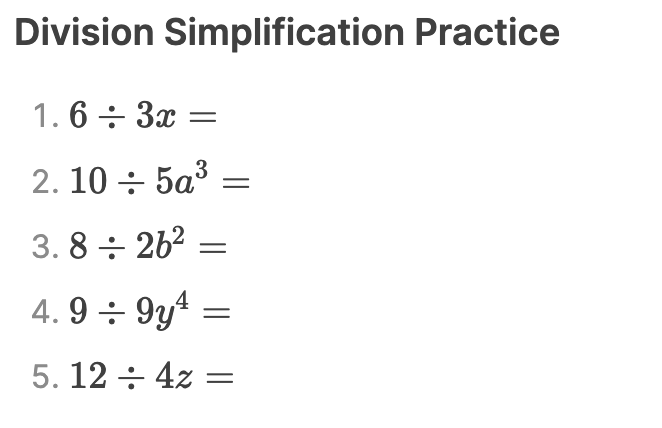
Method:
Divide coefficients normally.
Apply the rule 1yn=y−nyn1=y−n if negative exponents are allowed.
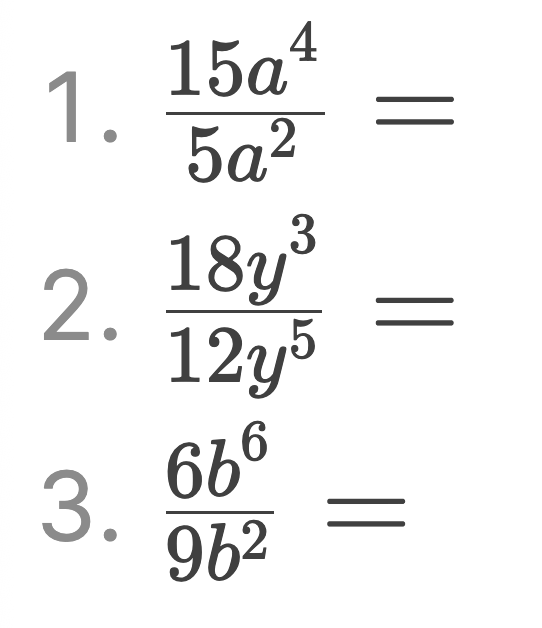
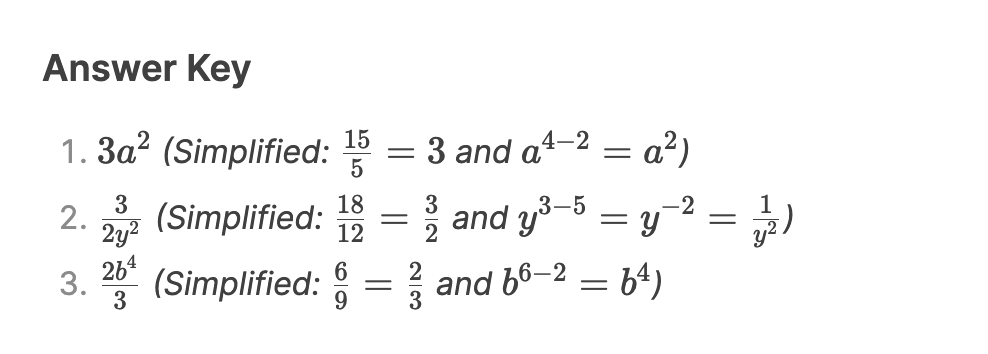

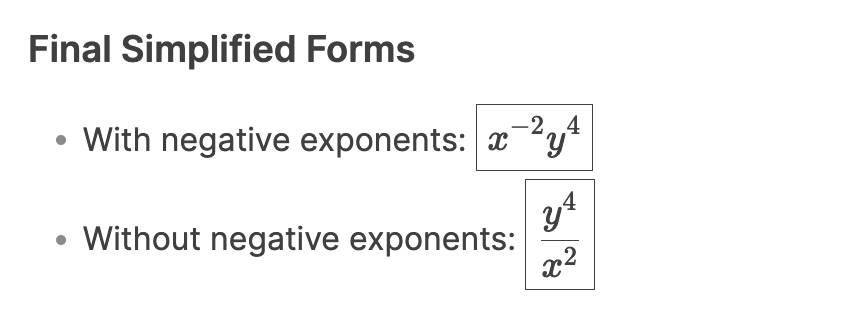

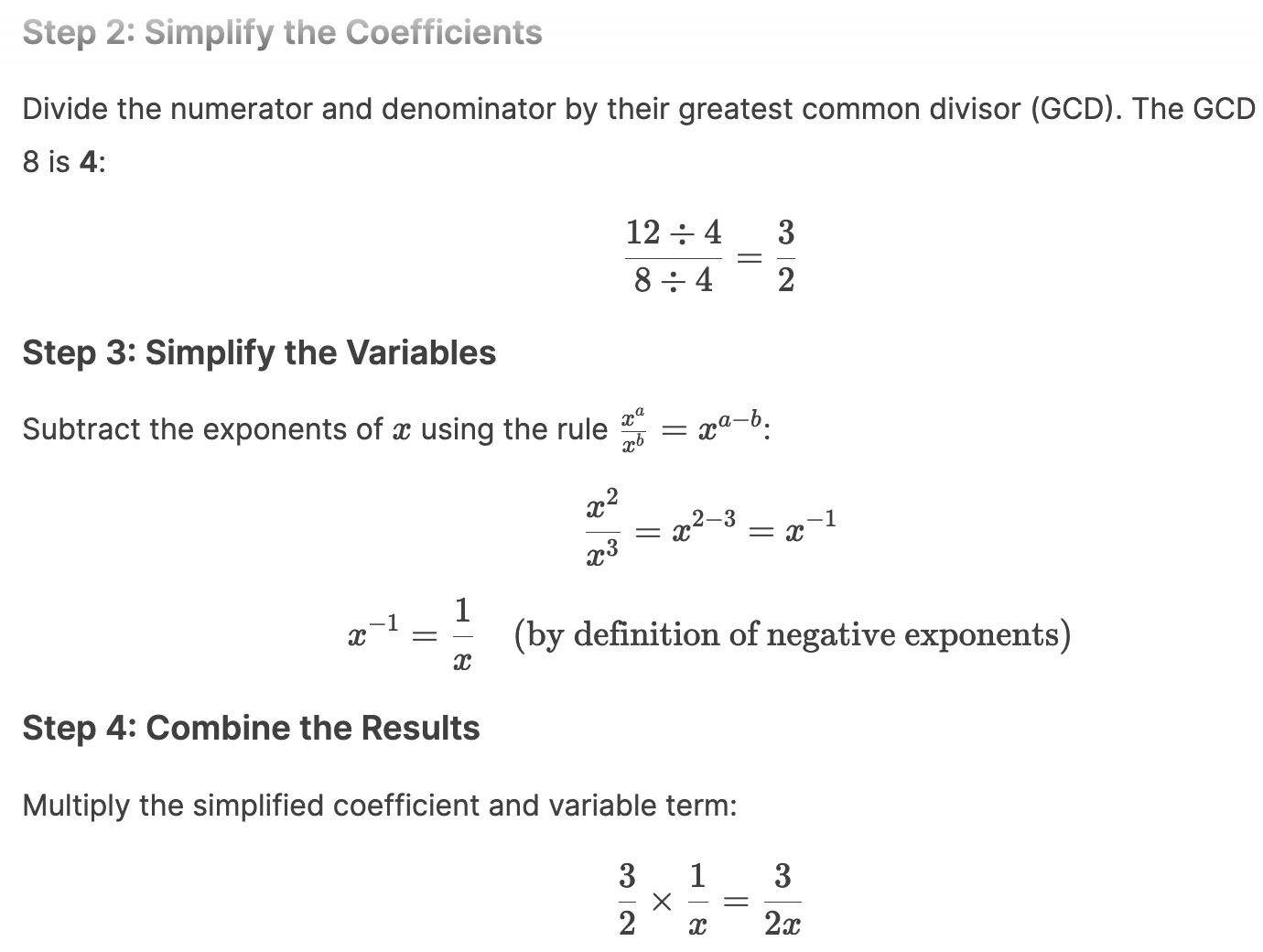
percentage change formula
(change/og)x100
percentage increase formula
find percentage of said number
add result to said number
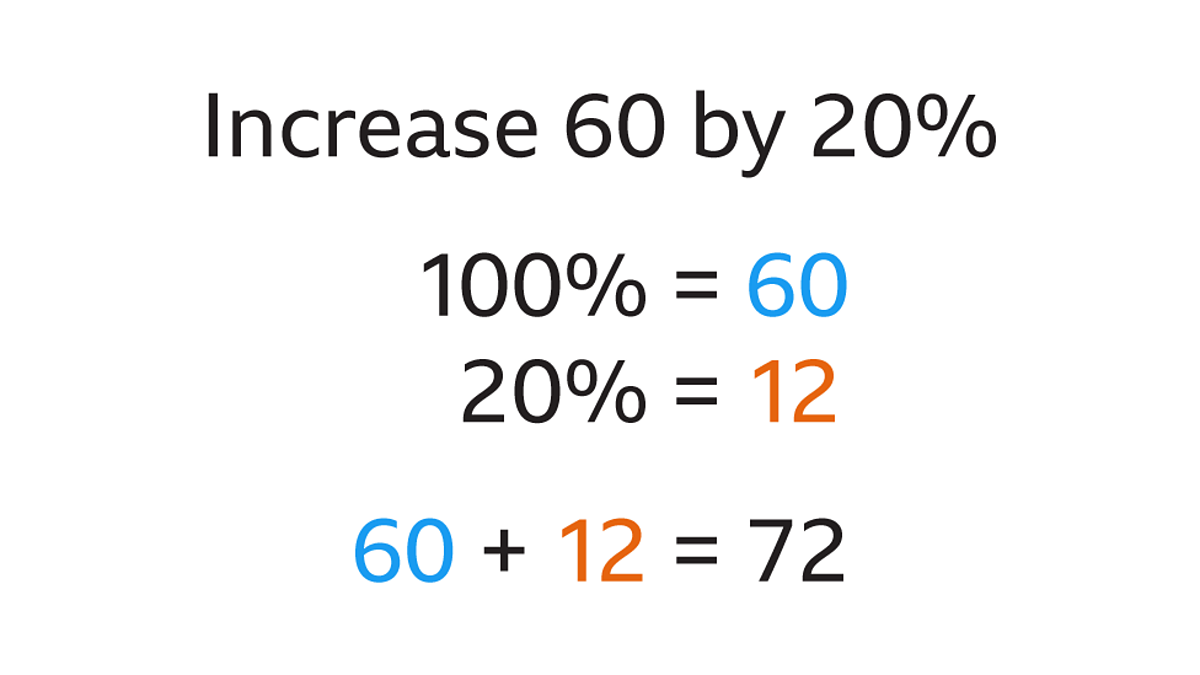
percenatge decrease formula
find percentage of said number
minus result to said number
